 | « Back to article | Print this article |
Divya Rolla suggests asanas you can do every day to improve your health.
Want a strong core?
Want good muscle endurance?
Want to become more flexible and have greater lung capacity?
Or do you simply want more joy in your life? More peace of mind and less stress maybe.
Seems like a tall wish list and pretty impossible, right?
Well, it is not, and you don't need to look any further to attain all this. You have Yoga!
When most people think of yoga, they always think of it as a solution for only one thing: Body flexibility.
But when you practise yoga in its fullest sense, both on and off the mat, it opens possibilities to all of the above wishes for us.
So, this International Yoga Day, let's take that first step towards a better version of you. The first step to gaining a better understanding and control over the mind is the body.
Presenting my list of everyday go-to asanas, which help in keeping my body healthy and supple.
If you are completely new to yoga, I recommend practising with a teacher and truly learning how to perform these postures with good alignment and technique before doing them on your own.
Let's get started:
1. Supta Padangusthasana 1 and 2 (Reclining-Hand-to-Big Toe Pose II)
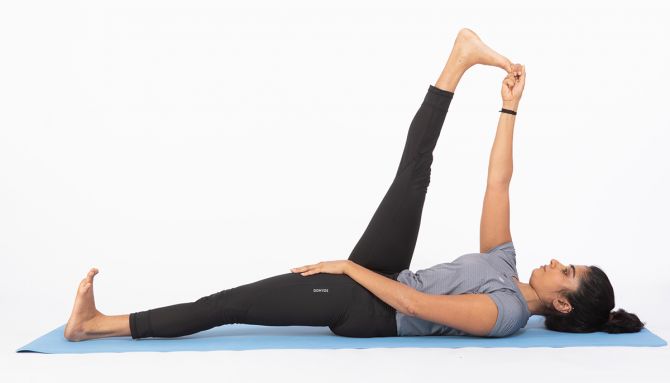
How to do it
Hold for 1 minute on each side and repeat twice.
You may place a bolster under the thigh of the leg being lifted for further support.
This pose is my go-to pose for beginners to advanced practitioners.
It lengthens the hamstrings, releases the low back, opens the hips and inner thighs, and relieves tightness along the outer leg, hips and glutes, all while keeping the spine neutral, safe and supported.
2. Utthita Parsvakonasana (Extended side angle pose)
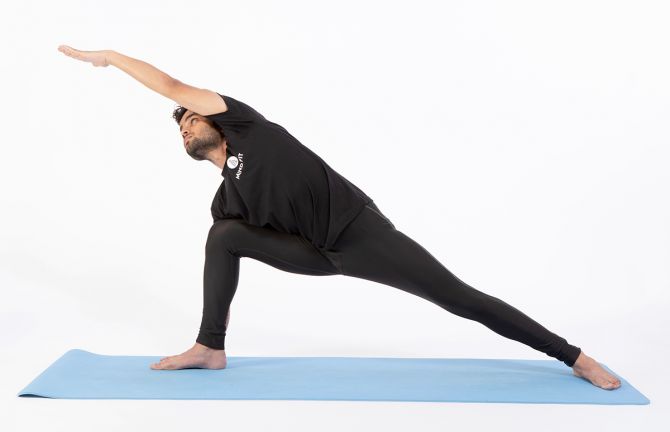
How to do it
Hold for 1 min on each side and then repeat.
This beautiful posture enhances lung capacity; strengthens ankles, knees, hamstrings, hips, spine, shoulders, lungs; stretches ankles, hips, hamstrings, spine, chest, and lungs; relieves sciatica and lower back pain; strengthens digestion. Need I say more?
3. Supta Baddha Konasana (Bound Angle Pose)
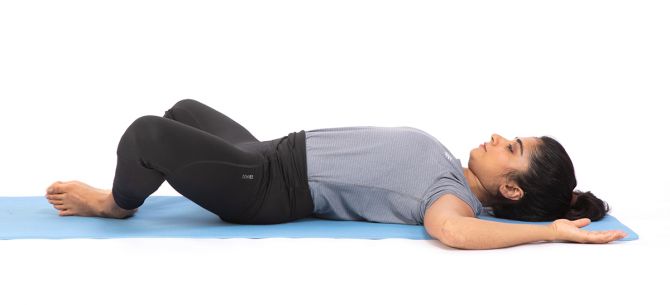
How to do it
Hold for 1-2 minutes.
You can place a cushion under each knee for extra support.
This posture is restorative, or passive, and it allows the body to rest.
It can soothe the nervous system and has many physiological benefits including lowering the heart rate and aiding in digestion and sleep.
It also opens the hips, shoulders, and chest, and in doing so allows for deeper diaphragmatic breathing.
For some people, this pose can also relieve tension and alleviate pain in the lower back.
4. Sarpasana (Snake pose)
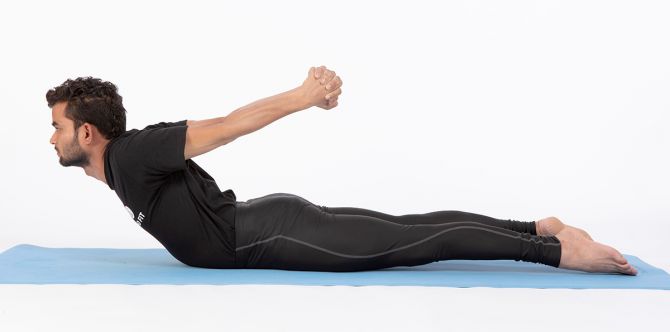
How to do it
Hold for 15 seconds and then repeat thrice. This posture helps relieve stiffness in the spine, thereby helping improve posture and helping improve respiration
5. Shalabasana (Locust pose; Repeat two times)
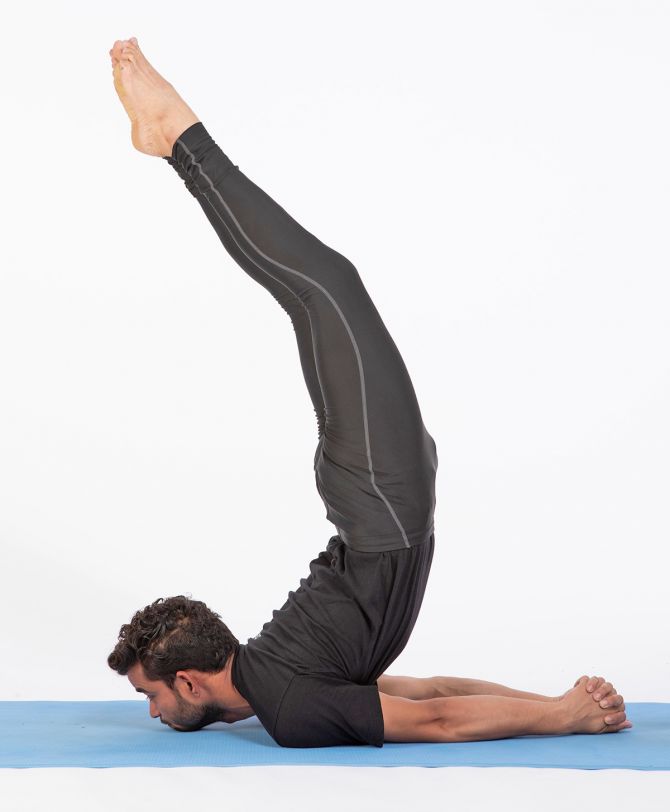
How to do it
This posture effectively will prepare you for deeper backbends, and also helps in strengthening the back of the torso, legs, and arms.
6. Dhanurasana (Bow pose)

How to do it
Hold for 15 secs and then repeat twice. '
This back-bending posture strengthens your back; opens your shoulders and chest; stabilises your legs; improves hip-flexor function; stimulates digestion and energy flow in your internal organs.
7. Ustrasana (Camel Pose)
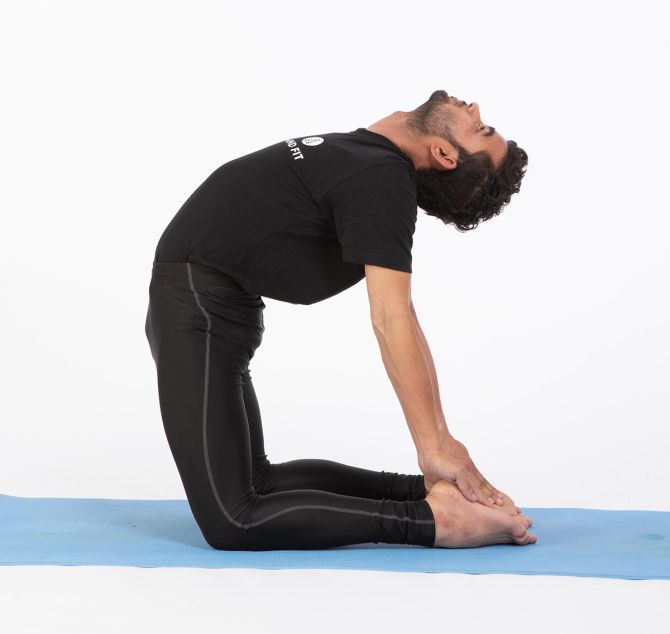
How to do it
Hold for 30 seconds. This is a slightly more advanced back bending posture, and it increases flexibility in the spine; improves posture and removes tightness in the shoulders and the chest.
8. Janu Sirsasana (Head-to-Knee Pose)

How to do it
Hold for 1 minute on each side and then repeat twice.
This posture stretches the hamstring and increases the flexibility of the hip joints.
It also helps improve the disorders of the abdominal and pelvic region -- disorders that include pancreas, kidneys, and adrenal gland.
9. Ardha Matsyendrasana (Half Spinal Twist)
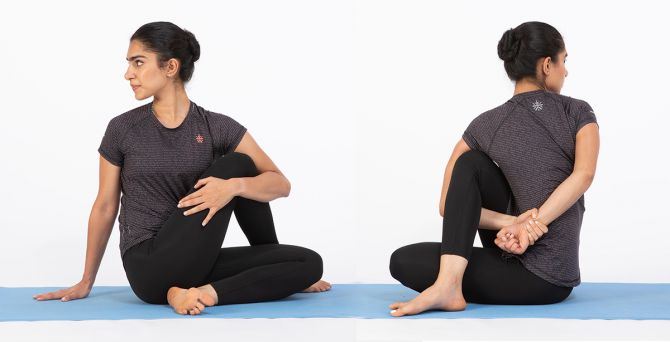
How to do it
Hold for 30 seconds on each side and then repeat twice.
This posture lubricates and nourishes the spinal column, increases the elasticity of the muscles and ligaments of the spine, soothes the nervous system, prevents backache, massages internal organs, toning the liver, kidneys and spleen.
It also aids in digestion and helps reduce abdominal fat.
10. Sarvangasana, followed by Matyasana (Shoulder Stand and Fish Pose)
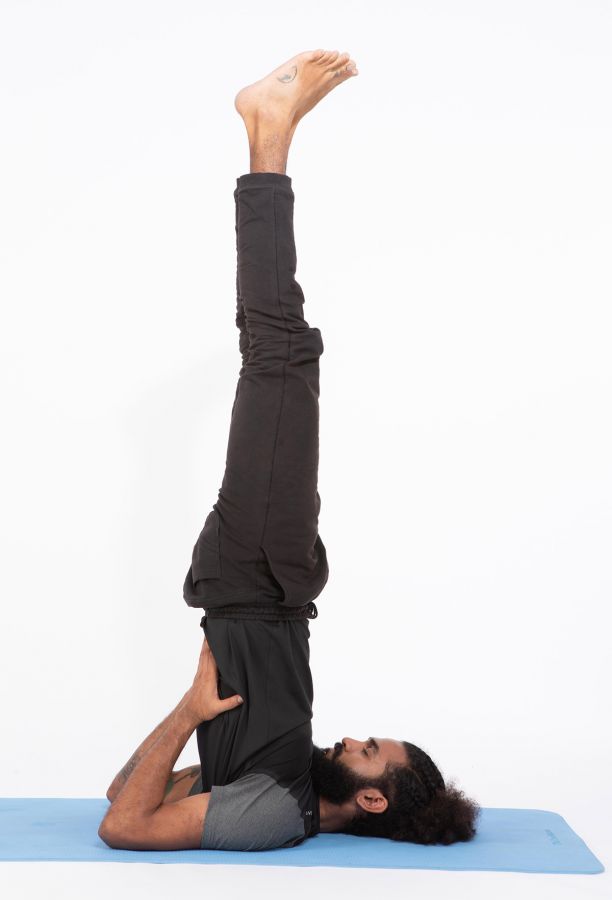
How to do it
Hold for 1 minute each.
These are wonderful postures to be done only when properly learnt under the guidance of a teacher.
Their benefits are numerous. Together they slow down your heart rate and lower blood pressure and give your heart a rest and reduce the strain on your heart.
These poses activate your parasympathetic nervous system, ensuring the proper function of all internal processes such as digestion and elimination as well as restore hormonal balance.
Following them regularly will improve the venous return of blood from your legs. These poses are highly beneficial for people with varicose veins and haemorrhoids.
They also strengthen the deep-core muscles, legs, buttocks, and lower back.
Wishing you all a happy International Yoga Day.
Let's all celebrate by rolling our mats out and committing to our good health from this day forward!
Divya Rolla is the yoga and meditation lead at Cult.fit, a health tech start-up.

Disclaimer: All content and media herein is written and published online for informational purposes only. It is not a substitute for professional medical advice. It should not be relied on as your only source for advice.
Please always seek the guidance of your doctor or a qualified health professional with any questions you may have regarding your health or a medical condition. Do not ever disregard the advice of a medical professional, or delay in seeking it because of something you have read herein.
If you believe you may have a medical or mental health emergency, please call your doctor, go to the nearest hospital, or call emergency services or emergency helplines immediately. If you choose to rely on any information provided herein, you do so solely at your own risk.
Opinions expressed herein cannot necessarily provide advice to fit the exact specifics of the issues of the person requesting advice.